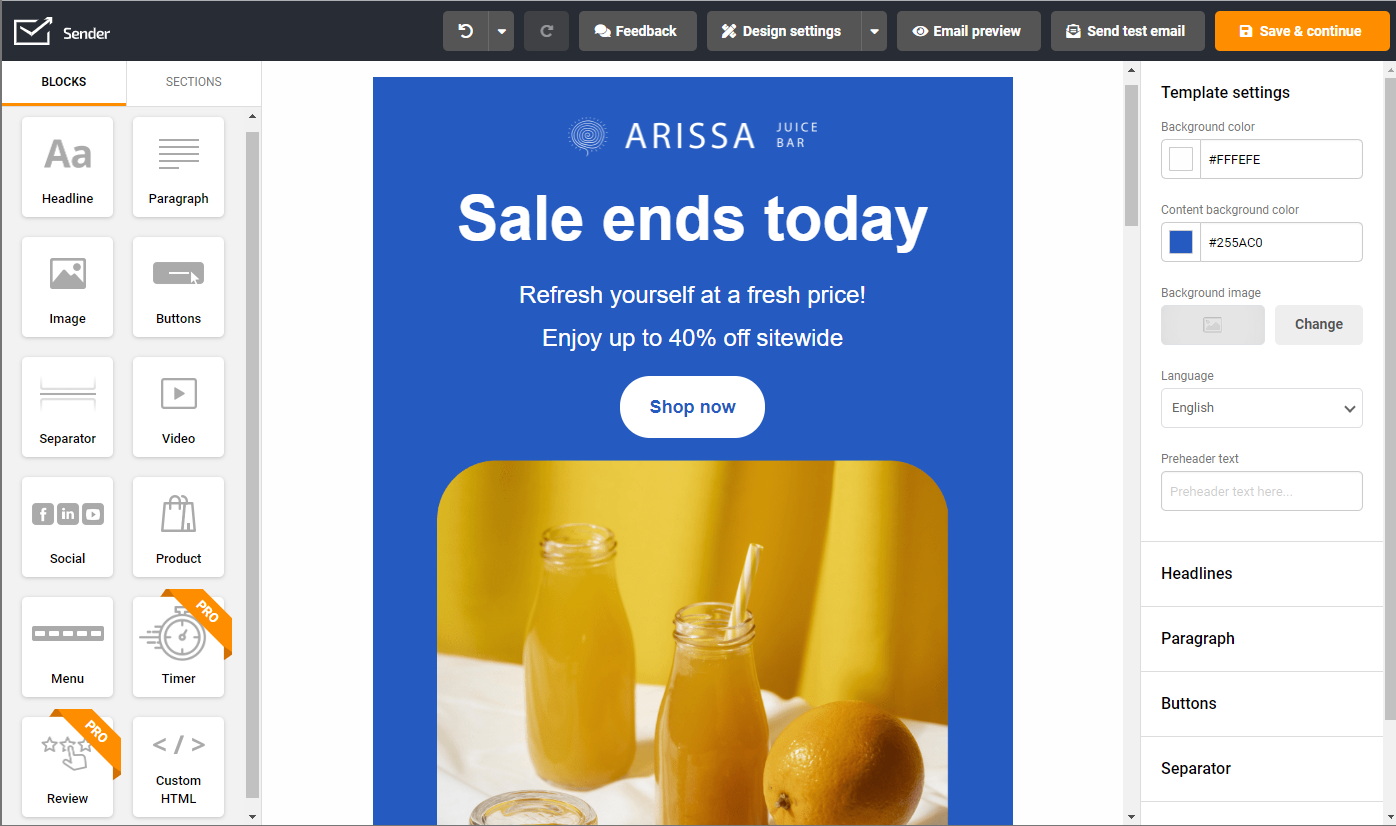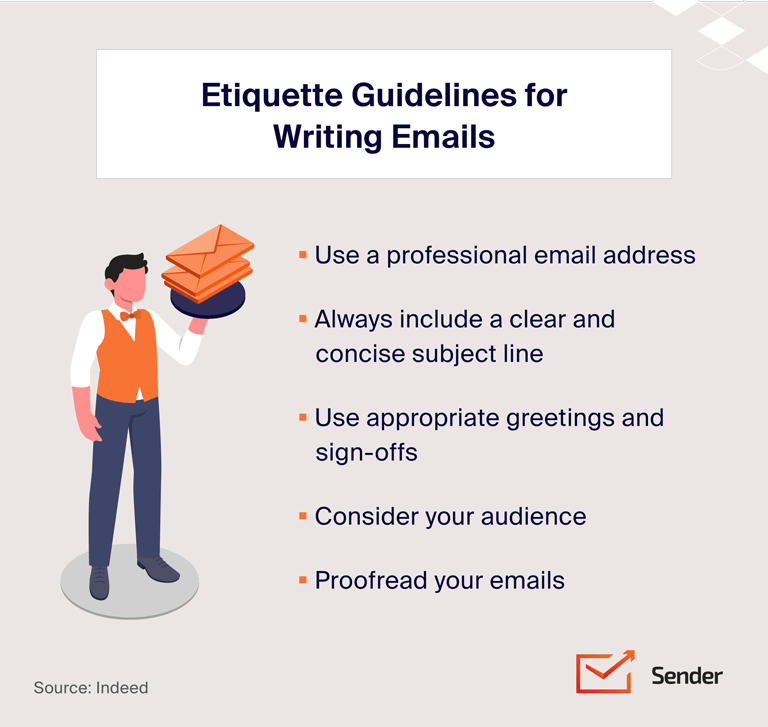We’ve all sent that awkward first introduction email. Blank screen. Overthinking every word. Hoping it doesn’t sound too desperate or too dull.
But a good intro email doesn’t need to be complicated. It just needs to be clear, relevant, and a little human.
In this guide, we’ve shared 11 examples that work in the real world. From cold outreach to warm welcome intros, each one is easy to tweak, quick to send, and built to get replies.
Scroll through. You’ll probably find one you can use today.
What is an Introduction Email?
An introduction email is your digital first impression. It’s how you reach out to someone you haven’t spoken to before—whether that’s a potential client, employer, investor, or collaborator.
But it’s more than just saying “Hi.” It’s a chance to quickly explain who you are, why you’re reaching out, and what’s in it for them. The goal? Start a conversation—not send a monologue.
A smart cold email can open doors, build trust, and lead to real opportunities. It just takes a little clarity (and the right tone). Let’s look at how you can write a great intro email in the next section.
Key Elements of an Email Introduction
A solid intro email isn’t just polite—it’s strategic. You must write clearly why you’re reaching out and what’s in it for the recipient.
Here are the elements of an effective intro email:
- Strong subject line. A compelling subject line will decide if your email gets opened or ignored. Keep it short, specific, and relevant to the recipient;
- Professional greeting (formal vs. informal). Match the tone to who you’re writing to. “Hey” works for a casual introduction email, but “Dear team or [Name]” is safer for a formal introduction email template;
- Clear self-introduction. Quickly explain who you are and why your email matters. Write a brief description — one or two sentences max;
- Value proposition. What’s in it for them? Add a brief but specific explanation about how you can help, solve a problem, or add value, without overselling;
- Call-to-action (CTA). Be clear about what you want next. A meeting? A reply? A quick look at something? Spell it out;
- Professional sign-off. Wrap it up with a friendly yet professional ending. “Best regards” or “Thank you” work better than casual sign-offs.
15+ Email Introduction Examples
Need a ready-to-send email for a tricky intro? We’ve got you covered. These email introduction examples work for different scenarios.
Just copy these email introduction templates and tweak them as per your needs.
Job Application Email Template
One of the best ways to stand out from hundreds of applicants for a job role is to send out a formal introduction email to the recruiter (or a decision maker) at the company. Use the following template to reach out. Remember not to be too pushy in your email; don’t forget to attach your resume.
Subject: Hey [First Name]! Can I work with you at [Company Name]?
Hi [First Name],
[Your First Name] here. I have been following your journey at [Company Name/Product Name] on [Platform you Follow them] since [Period]. I got to say that you guys are doing a really great job at [Company Name].
I’ve worked in the industry for [number of years], through which I’ve worked with big names like [your client/ongoing projects].
I was working on a [project] and saw that you’re building something similar. I would like to work closely with you on the project and am attaching my resume and portfolio for consideration.
If you like my work, I’d be happy to hop on a brief call to formally pitch my candidature.
Looking forward.
Thank you.
— [Name]
Make a powerful first impression—use ready-made templates and an easy email builder to craft emails that get replies.

Open Position Inquiry Template
It’s common knowledge that most jobs are filled before being advertised on job portals. Sometimes, a position is open, but hiring managers and HRs don’t have the bandwidth to broadcast it publicly.
Email a formal inquiry about an open position to explore the possibility of getting a job at your dream company. Here is an open position inquiry introduction email template:
Subject: Hey [First Name], Are you looking for a pro [job title]?
Hey [First Name]
My Name is [First Name], and I am reaching out to inquire if your company has an open role for [job title].
I was looking at your [project/website/future roadmap] and felt you might be planning to hire a [job title] soon. I’ve worked with big names like [your client/project list] over the last [professional experience, in number of years]
I’d love to show you how I can be useful at your earliest convenience. Would be happy to hop on a quick call to discuss. My portfolio is attached for your reference.
Thank you.
Sincerely,
[Your full Name and LinkedIn link]
Information Request Template
Sometimes, you need to reach out to a peer, customer, or stranger seeking information they have access to. This situation occurs when trying to gather market research data. Use the following formal email template for sending a polite request to anyone:
Subject: Hey [First Name]! Need your feedback/input/help
Greetings!
My Name is [Name], and I work as a [position] at [company name]. This might sound like spam, but I have a genuine interest in some information that you may have.
If you have a few minutes and can share with me about [essential details of the information needed], I’d be highly obliged.
You can also click the link [survey/feedback link] to answer a few questions quickly, and I will have everything I need.
Please reply to this email if you’ve got any other ideas about how I can source the info I need.
Thank you in advance.
Regards
[Your Name]
LinkedIn Connection Request Email
When you want to connect with someone professionally on LinkedIn, a personalized introduction email can boost the chances of acceptance.
You should be quick and respectful in your tone while writing a new contact introduction email. Here’s an example of how you can do so:
Subject: Quick Intro – Would Love to Connect
Hi [Name],
I came across your profile while exploring about [industry/topic], and I really liked your perspective on [specific post, role, or topic].
I’m working on something similar at [Your Company/Project], and thought it’d be great to connect here.
Looking forward to staying in touch and learning from your posts.|
Warm regards,
[Your Name]
Partnership Proposal Email
Want to pitch a potential partner? Such emails help you introduce your company, hint at the value, and open the door to a deeper conversation, without sounding pushy.
Here’s a great example that you can use to introduce yourself and pitch to a potential partner.
Subject: Up for a collab, [First Name]? We’re excited!
Hi [Name],
I’m [Your Name], leading [Your Role] at [Your Company]. We’ve been following your work at [Recipient’s Company] and love what you’re doing in the [industry] space.
There’s a strong overlap in our goals, and I believe there’s potential for us to collaborate in a way that benefits both sides.
Would you be open to a quick call next week to explore it further? Happy to share a few ideas in advance if that helps.
Best,
[Your Name]
Professional Introduction
A professional introduction email is sent to anyone you know (or want to know) professionally to introduce yourself. Professional emails are sent to prospective partners, peers, and potential customers, telling them about you, your products, services, or what you seek.
For example, a personalized business introduction email is a great way to start a conversation with someone you want to connect. Here’s a template to professionally introduce yourself over email:
Subject: [First Name] here seeking help regarding [reason for introduction]
Hello [First Name]
My name is [First Name], and I work as a [job position/title] at [Company Name].
I’ve been an active member of the [mutual community/professional network/event] and am eager to get in touch with you about [reason for introduction/conversation].
Let me know if you’re free sometime next week for a quick conversation.
Looking forward. Thanks.
Sincerely,
[Your Name]
Self-introduction Email Sample
A self-introduction is a great way to make a positive impression with a new contact. Such emails are useful in starting a conversation, building a rapport, and warming them up. It helps to let them know who you are, what you do, and why they should talk to you. Here’s a sample:
Subject: Hey [First Name]. Keen on Knowing You Better.
Dear [First Name],
[First Name] here, and I am reaching out to introduce myself as I recently joined/met/discussed [recipient’s product/company name/mutual contact details].
I have been working on some great projects and clients in the industry for [number of years] and have worked with some great brands like [your client/project list]
We can meet up sometime to discuss the possibility of chasing our common goals/ambitions and doing some great things together.
If you’re free this week, let me know.
Looking forward to hearing from you.
Best,
[Your Name]
Formal Email Pitch
An email pitch is a cold email introduction sent to someone you don’t know. These are sent when you’re trying to reach out, ask for feedback on a project, or professional closing. Generally, such emails are sent by startup owners to investors seeking a meeting. Here’s an example:
Subject: [Product Name] Says 👋 & Loves Your Approach on [Mutual Interest]
Hey [First Name]!
[Your First Name] here, and I wanted to reach out to you regarding [project name] I have been working on for the last [number of months, in number of months].
I read about your take on [mutual industry interest] and feel that you’d like to see what we’ve been up to in this regard. I have attached a brief pitch document for you to check and see if this is worth your time.
We’ve already put a lot of effort into [project name], and your input/feedback/guidance will help us stay motivated to work towards our shared goal.
I’d be happy to hear from you and look forward to meeting you.
Best,
[Your Name]
Networking Email Templates
A networking email introduction is sent to someone you met at an event and would like to stay in touch with in the future. Refer to a mutual connection to start a conversation and build rapport. Here’s an example of such an email:
Subject Name: Love your Ideas. Keen to Connect on [Platform of Interest]!
Hey [First Name],
My name is [First Name], and I’ve been on LinkedIn for [number of years]. I felt like connecting with you as we both work in/as a [profession/industry].
Your insights about [common interest topic] attracted me to your profile and made me eager to learn more about your journey and products.
I’d be happy to share my thoughts and possibly have a video chat about [topic/company/product] sometime soon.
Eager to connect.
Thank you.
Regards,
[Your Name]
Sales Introduction Email
A sales introduction can be used when you’re looking to sell something to a buyer or prospect and want to reach out to warm up a lead. An effective sales email introduction can help you break into the door of a potential prospect. It’s a formal email seeking permission to start a dialogue with someone.
Subject: Hey [First Name] 🙋🏻You no longer need to struggle with [pain point] anymore!
Dear [Name],
Greetings!
This is [Your Name] here, [Company name]. I work on some interesting ideas every month and was reading your blog post on [blog topic]. I’m pretty impressed by what you’ve shared and found out you’re facing some trouble with [pain point/issue].
We’re currently building [Product Name], which solves your exact problem without increasing workload or financial spending.
Would you like to learn more about [our product/service]? If so, I’d happily schedule a demo or discuss your needs and goals.
Please let me know if there’s anything else I can do for you.
Best regards,
[Your Name]
Company Introduction Email
A company introduction is a formal email sent to a prospect introducing your company, value proposition, and/or yourself in the context of what you do. It’s a great opportunity to tell someone about your business and how you could be useful to them. It’s your chance of introducing yourself and building relationships.
Here’s a basic template for an introductory email:
Subject Name: [Company Name] Can [Save You Time/Bring Down Cost/Achieve Efficiency]
Hello [First Name],
My Name is [First Name], and I work at [Your Company Name]. I saw that you continuously seek support and assistance in [industry].
I am reaching out to introduce you to [your company name]. We provide [service/product set] for [target audience] to help them [your prospect’s pain point or growth goal].
I’ve been following you on [Linkedin/LinkedIn] and was wondering if we could quickly schedule a call to discuss if you need [service set].
I am available for meeting anytime during the week.
Thank you.
— [First Name]
New Employee Self-introduction
A self-introduction email is useful when you’ve joined a new company and want to share your work experience and greet your new colleagues. These emails are generally sent during the onboarding process and are crucial to make collaboration in the future easier. Here’s a template that to introduce yourself.
Subject: [Your First Name] Here! Reaching Out to Say a Quick Hello!
Dear [colleague’s Name],
I hope you’re having a good day!
My name is [Your Name], and I am one of the new hires at [Name of your company].
Previously, I worked with [previous company name], during which I’ve worked with [your client/project list].
At [Current Company Name], my job will be to [job responsibilities]. I will be reporting to [Reporting manager], and you can dial in at [extension number] for a quick response.
Looking forward to working with you in the future.
Thank you.
Regards
[Your Name]
Also read: 5 New Employee Announcement Email Template Examples
Newsletter Introduction Examples
Newsletters are one of the most effective ways to share the latest updates, engage your prospects, and keep subscribers hooked with the latest news about products and happenings in your company. A newsletter introduction email is sent to anyone you feel would be interested in signing up for your newsletter.
Here’s a template:
Subject Line: Fellow Writer & Admirer Reaching Out with a Request OR Loved Your Piece on [Topic]
Greetings!
My name is [Your First Name], and I run a newsletter called [Name of Your Newsletter].
I came across your blog post on [website/article] and loved your take on [topic].
I thought I’d get in touch to let you know about my newsletter as I write in a similar niche.
We both are preaching/writing similar ideas, so I felt like reaching out. I regularly post hidden insights that you can use for your future blog articles in my monthly newsletter.
You can subscribe to my newsletter by signing up at [link to newsletter subscription page].
If you’ve got any questions, email me at [email address]. Once again, it was a delight to read your thoughts. I hope you sign up for my newsletter. 🤞
Best Regards
[Your Name]
Team Introduction Announcement
Let’s say a new team member is joining, or there’s a shift in responsibilities, and you want to formally introduce a new manager or team member to a client or partner. In this case, such types of emails help set expectations and are good for professional communication.
Here’s a template for you to use:
Subject: Meet [New Team Member] – Your New Point of Contact
Hi [Client’s Name],
I wanted to introduce you to [New Member’s Name], who has recently joined our team as [Job Title]. [He/She/They] will now be your primary point of contact for [Project/Area], and I’m confident you’ll enjoy working together.
[New Member’s Name] brings [mention one strength or relevant background]. I’ve looped them in here so you can take it from here directly.
Let us know if you need anything. Always here to help!
Best,
[Your Name]
Introduction Email Etiquette
Even an engaging introduction email can fall flat if it breaks a few unwritten rules. You need to follow professional etiquette while writing such emails.
Here’s what to keep in mind to make the right impression:
- Subject line best practices (avoid spam triggers). Keep email subject lines short and relevant to land in the recipient’s inbox. Avoid words like “urgent,” “free,” or “act now” that could land your email in spam folders;
- Tone & professionalism (formal vs. friendly). Match your tone to the context. Use a friendly yet respectful tone for peers and a more formal one when reaching out to senior professionals;
- Length & structure (keep it concise). Get to the point fast. Stick to 3–5 short paragraphs max, and make sure the key message is clear within the first few lines;
- Follow-up timing (when & how to send reminders). If you don’t hear back in 3–5 business days, it’s okay to send a polite follow-up. Keep it short, friendly, and non-pushy;
- Avoiding common mistakes (overly salesy, too vague, etc.). Don’t over-sell, over-explain, or send without context. Clarity beats cleverness. Let the recipient know why you’re writing and what’s in it for them.

How to Write an Introduction Email?
If you need tips on how to write your intro email, we’ve got gold — best practices for introduction emails you should follow.
Here’s a simple breakdown to get it right every time:
- Define your goal (networking, sales, collaboration, etc.). Know what you want before writing. Clarity helps you shape your message and choose the right tone, CTA, and email structure;
- Research the recipient (personalization tip). Look them up. Mention something specific—a recent post, role change, or shared connection—to show it’s not a copy-paste email;
- Craft a strong opening line (hook their attention). Avoid a generic opening. Instead, start with relevance. Mention a mutual interest, a quick fact, or why you’re reaching out now;
- Keep body concise & value-driven. Respect their time. Focus on what they’ll gain from this email—whether it’s insight, a solution, or a potential opportunity;
- End with a clear CTA. Don’t leave them guessing. Ask for a call, a reply, or a quick look—whatever next step makes sense. Make it easy to say yes;
- Proofread & test (A/B testing subject lines). Always check for typos and weird phrasing. Test different subject lines if you’re sending this to a larger list or cold outreach group.
You might also like: 55+ Introduction Email Subject Lines





